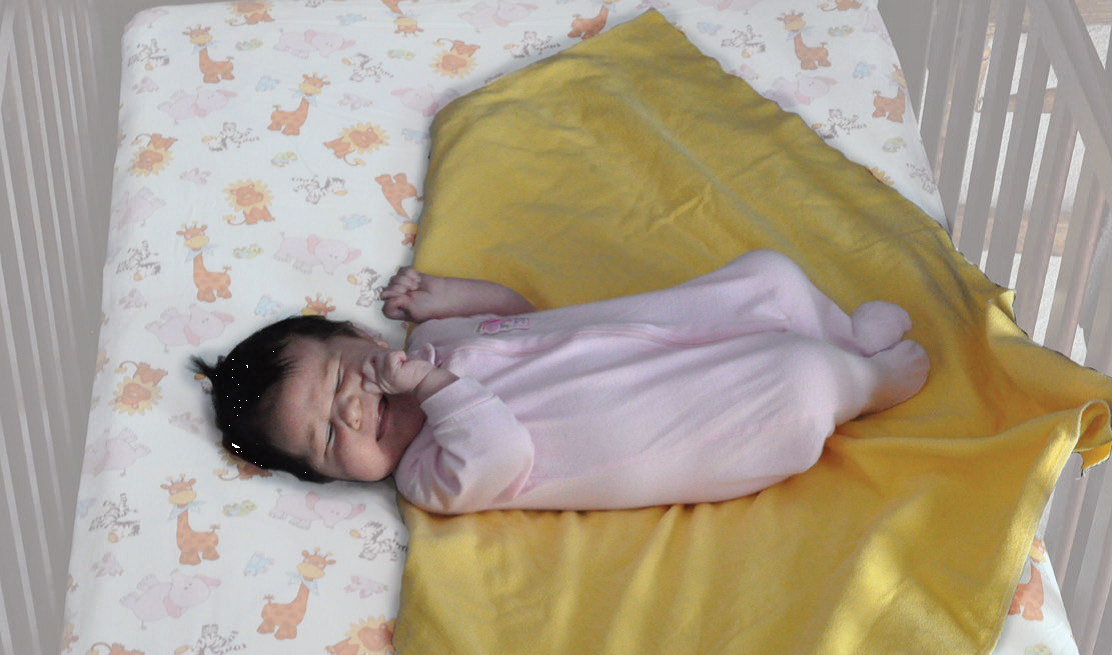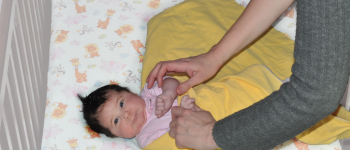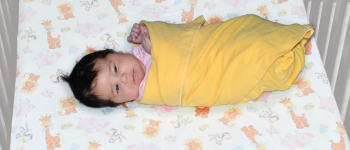What are the risks of swaddling?
Swaddling can get in the way of mother-baby bonding and newborn feeding
Skin-to-skin contact between mother and baby has many benefits. It helps you develop your relationship with your baby, helps reduce your baby’s stress, promotes more restful sleep and helps with breastfeeding.
Tight swaddling can be risky
- Tight swaddling can interfere with breathing and can even lead to pneumonia. Your baby must have enough room for their chest to move.
- It can cause long-term hip problems. Your baby must have enough room to freely move the hips and legs.
Swaddling for sleep may result in sudden infant death
- Loose fabric can cover baby’s face and cause suffocation.
- If the baby becomes unwrapped, the fabric can become wrapped around baby’s neck and cause strangulation.
- The baby may roll onto their stomach and be unable to roll back.
- Babies wrapped in blankets or heavy fabrics can get too hot, which increases the risk of Sudden Infant Death Syndrome (SIDS).
- Sleeping with a baby on a bed or couch greatly increases the risk of sudden infant death and suffocation. This risk is even higher when a baby is swaddled.
What are the reasons for swaddling?
- If you’ve tried to soothe your crying baby by feeding, changing, and cuddling and your baby still isn’t comforted, you might try swaddling to calm them.
- Healthcare providers may recommend swaddling during bottle feeding for babies who are born prematurely, who become upset or distracted when feeding, who have a very low birth weight, or who have trouble gaining weight.
- Swaddling can provide pain relief for infants. Your doctor or nurse might swaddle your baby for needles or other painful procedures.
Choose a wrap that is:
- Free of drawstrings, ribbons, cords or tight elastic.
- Free of buttons, snaps or decorations which could become loose and cause choking.
- Made of breathable fabric such as light cotton with a loose weave. Do not use a heavy blanket for swaddling.
Choose the right swaddling technique for your baby’s age
- For younger babies (about 0-3 months old) wrap the arms in the swaddle with baby’s elbows bent, and hands close to the chin.
- For older babies (about 3-6 months old and babies who can roll) leave their arms free.
How to safely swaddle baby
Dress your baby in a light sleeper or undershirt to prevent overheating.
1. Spread the wrap out flat with one corner folded down. Lay baby face-up with baby’s head and neck above the folded corner.

2. Bring baby’s hands together over the chest. Bring one side of the wrap over top of the arms and tuck it beneath the baby.

3. Fold the bottom of the wrap up, leaving room for your baby’s feet to move freely. The hips and knees should be a little bent and have room to move.

4. Bring the second side of the wrap across the baby, tucking the end behind baby.

- Leave your baby’s hands free so they can show you when they are hungry.
- Check that the swaddle is not tight: two fingers should fit between the wrap and your baby’s chest.
- If your baby is sweating, they are too warm. You need to remove the swaddle.
Your baby is now ready to be held for comfort. Swaddled babies must never be placed on their sides or stomachs, even for a minute. Stop swaddling baby when your baby can roll over or is able to unravel the wrap. Loose fabric creates a suffocation or strangulation risk.
If your baby likes the “tucked in” feeling:
- Lay baby on their back with feet near the bottom of the crib.
- Place blanket so that it is no higher than baby’s armpits.
- Tuck the blanket into the sides and bottom of the crib.



